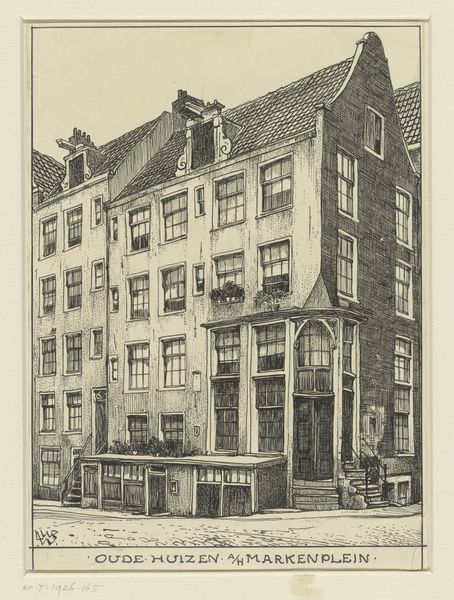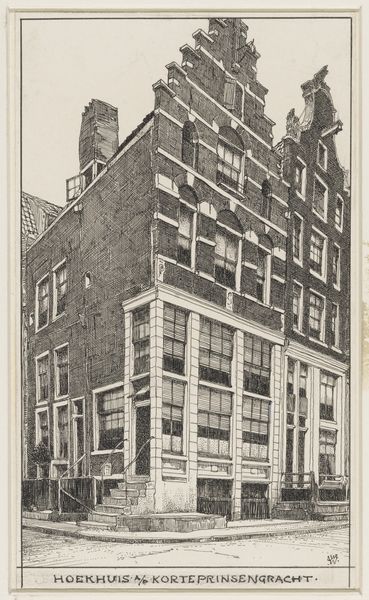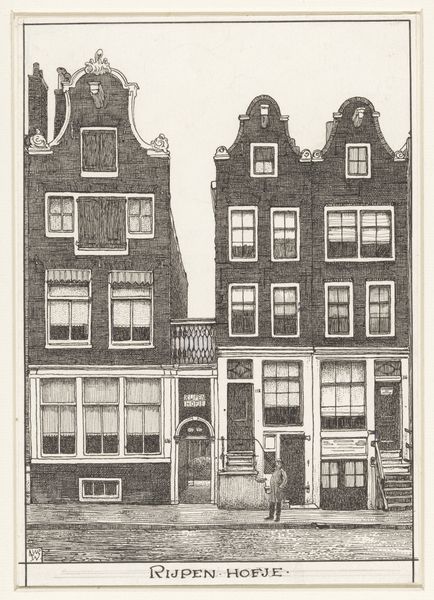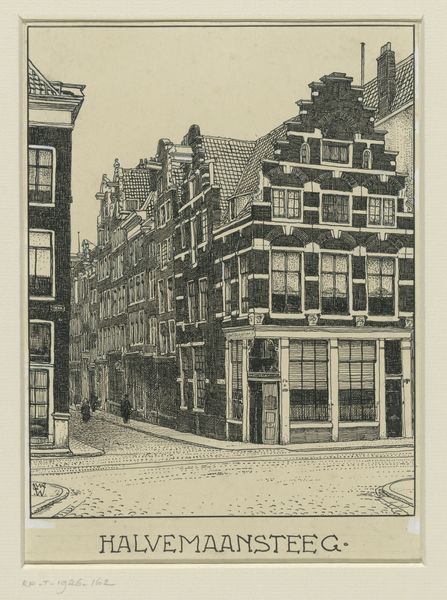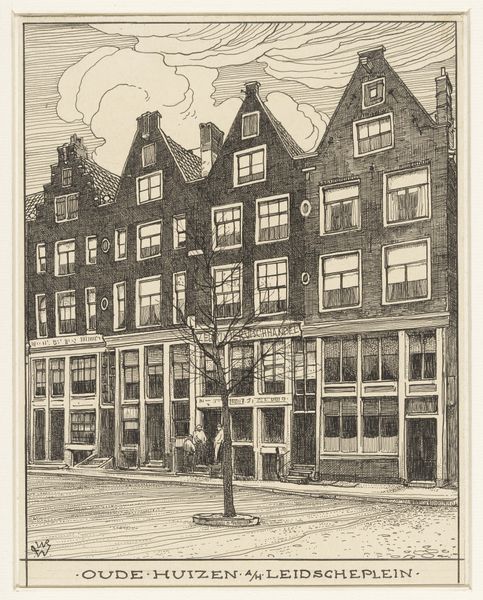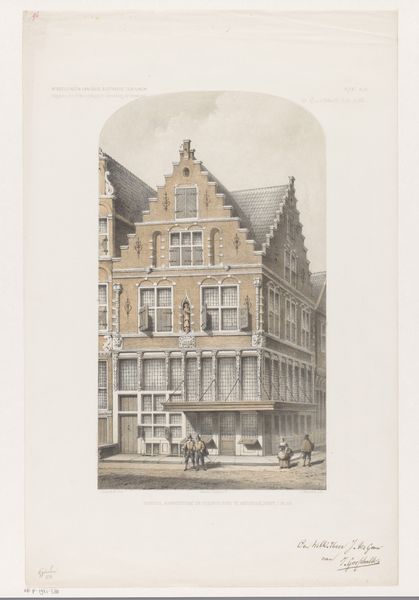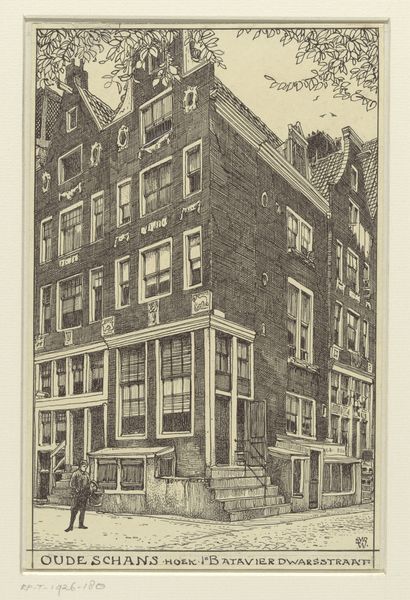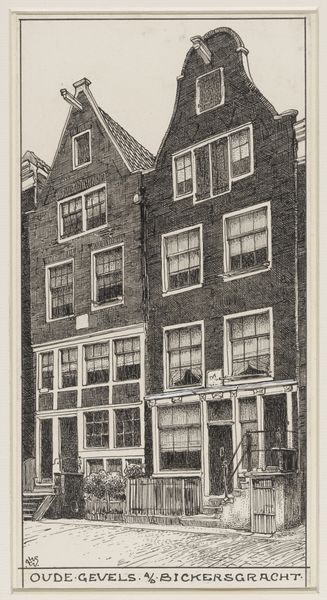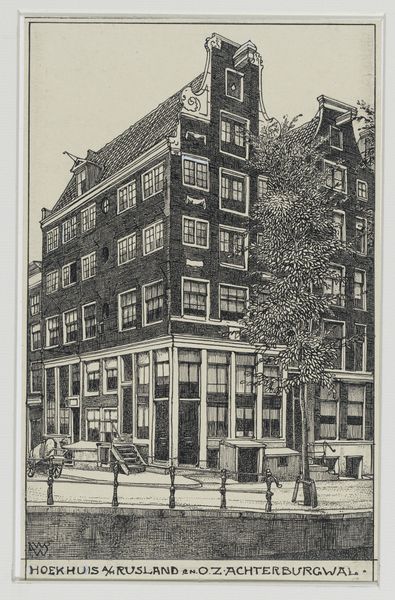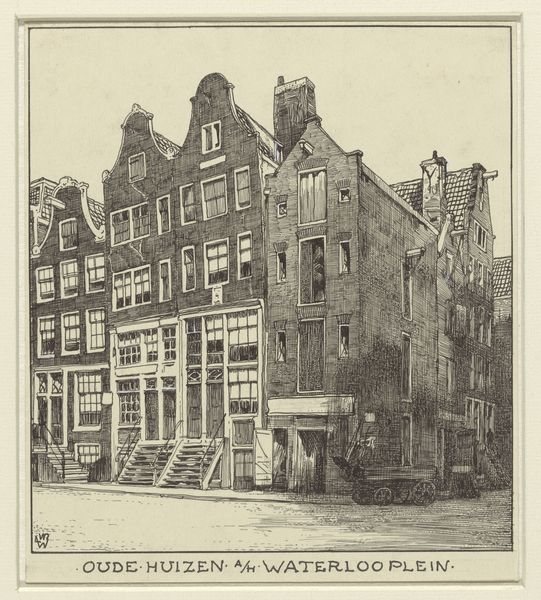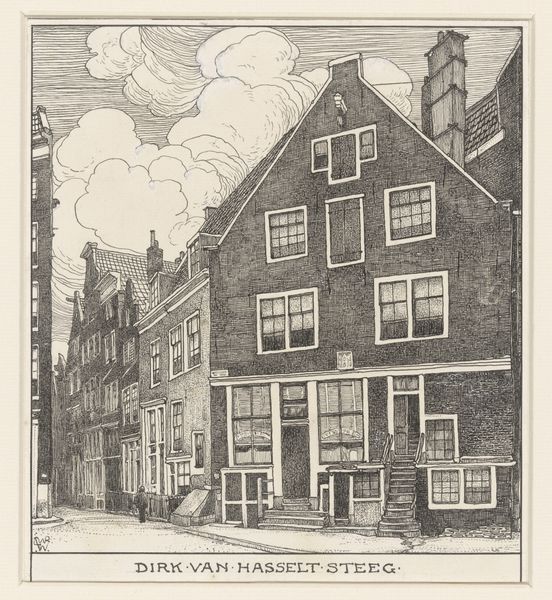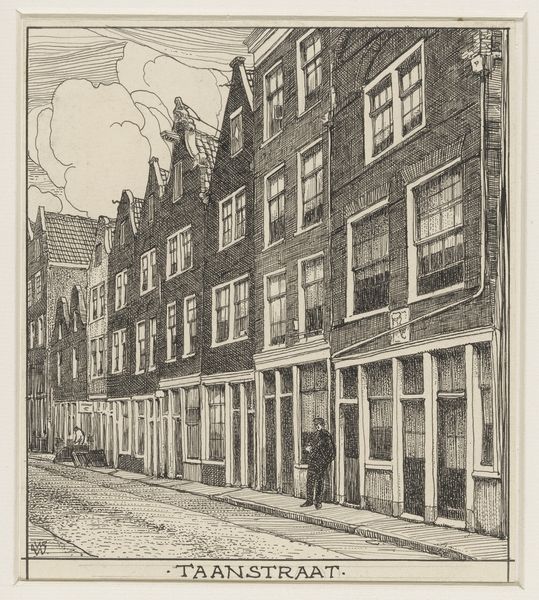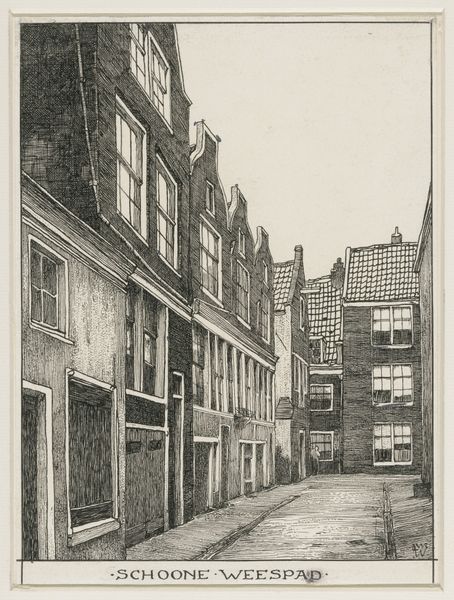
Het Spaanse Huis op hoek Singel en Droogbak te Amsterdam 1870 - 1926
0:00
0:00
willemwenckebach
Rijksmuseum
drawing, print, paper, ink
#
drawing
# print
#
paper
#
ink
#
cityscape
#
realism
Dimensions: height 194 mm, width 150 mm
Copyright: Rijks Museum: Open Domain
Curator: Here we have Willem Wenckebach’s "Het Spaanse Huis op hoek Singel en Droogbak te Amsterdam," a work made with ink on paper sometime between 1870 and 1926, now residing here at the Rijksmuseum. Editor: Immediately, the sheer amount of detail grabs me—all those tiny lines giving such precise form to the buildings. There’s a slightly melancholy, faded quality to it, like a memory just beyond reach. Curator: The architectural detail really is quite captivating, isn't it? One notes the Dutch gable roofs, the window placements, even the subtle differences in facade textures; each element speaks to a rich history, layering meanings and purposes onto a single structure. The signs on the main building shout about commerce and trade—a visual cacophony of industry and enterprise. Editor: Yes, it feels very 'city as text', with the signs functioning as symbolic markers of a specific time and place. The lines of text hint at past activities—I can almost smell the aromas of goods that were once traded within those walls. Did the Spanish House have actual links to Spain or its commercial ties? Curator: It's called the 'Spanish House' - traditionally, places that hosted the Spanish diplomatic delegation. The etymology suggests ties to broader shifts in trade networks, cultural influences—each line echoing past endeavors and commercial transactions. One cannot separate the urban landscape from the psychological contours it imprints. Editor: That's interesting—visual memories imprinted on the landscape. And speaking of imprints, do you see that ladder leading up to one of the windows on the facade? It feels surreal and somehow melancholic like some existentialist is just off camera poised between coming and going. Curator: Yes, the ladder serves as more than a mere object; its symbolic connotations link back to motifs around progression, elevation, and thresholds. Editor: I love the idea of urban symbols reflecting larger ideas. Looking at Wenckebach's depiction of a specific intersection through the lenses of memory, psychology, and anthropology...It is a great mix! Curator: Precisely! One gets such satisfaction tracing those intersections—seeing art act as cultural document. Editor: I know! Thanks to this glimpse into Amsterdam’s past, the Spanish House might feel less ghostly, now it has become more like home.
Comments
No comments
Be the first to comment and join the conversation on the ultimate creative platform.

